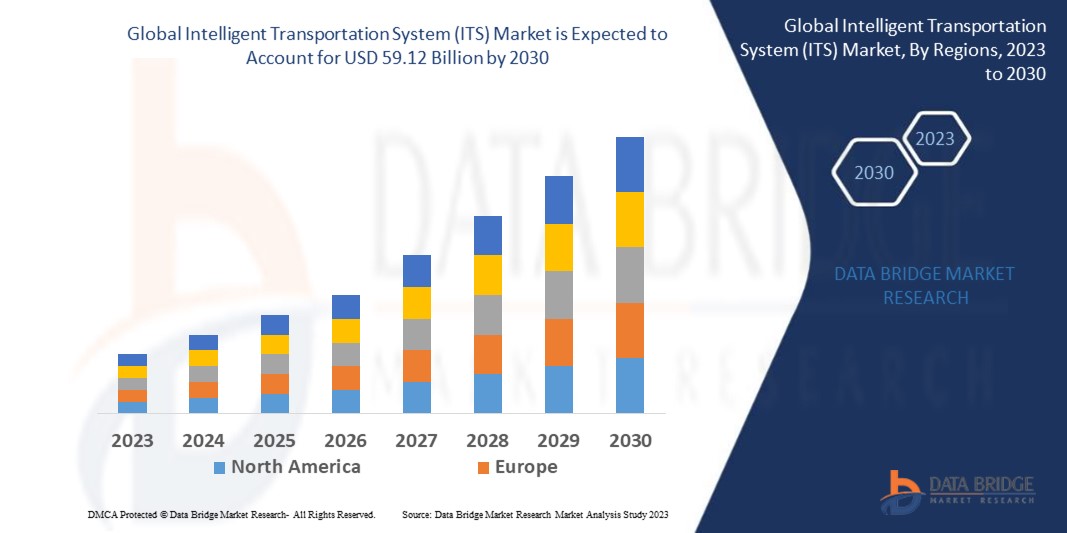Intelligent Transportation System (ITS) Market: Driving the Future of Smart Mobility

The global transportation landscape is undergoing a massive transformation with the integration of digital technologies, automation, and real-time communication systems. At the forefront of this revolution lies the Intelligent Transportation System (ITS) market, which is redefining how people and goods move. With rapid urbanization, growing traffic congestion, rising demand for safety, and the global push toward sustainable mobility, ITS solutions are increasingly becoming an indispensable part of modern infrastructure.
This article explores the growth drivers, market trends, key applications, challenges, and the future outlook of the Intelligent Transportation System market.
Understanding Intelligent Transportation Systems
An Intelligent Transportation System (ITS) refers to the application of advanced information, communication, and control technologies to improve the efficiency, safety, and sustainability of transportation networks. ITS integrates hardware such as sensors, cameras, GPS, and radars with software platforms that analyze data, provide real-time updates, and support decision-making.
The primary goal of ITS is to create a connected and intelligent ecosystem where vehicles, infrastructure, and people interact seamlessly. This not only reduces congestion but also enhances road safety, improves logistics, and lowers environmental impact.
Market Drivers
Several factors are propelling the growth of the ITS market:
- Rising Traffic Congestion
Rapid urbanization and an increasing number of vehicles on roads have created significant traffic challenges. ITS solutions such as adaptive traffic signal control, congestion management systems, and automated toll collection help mitigate traffic issues efficiently. - Government Initiatives and Investments
Governments across the world are investing in smart city projects and advanced infrastructure. National programs promoting road safety, emission reduction, and public transportation enhancement are boosting ITS adoption. - Advancements in Connected and Autonomous Vehicles
The growth of connected cars and the future deployment of autonomous vehicles require robust communication systems. ITS enables Vehicle-to-Everything (V2X) communication, which is essential for autonomous mobility. - Focus on Road Safety
Rising road accidents have increased the demand for safety solutions like collision avoidance, lane departure warning, and driver assistance systems, all supported by ITS technologies. - Environmental Concerns
ITS contributes to reduced fuel consumption and emissions by optimizing traffic flow and supporting eco-friendly transport solutions, aligning with global climate goals.
Key Market Segments
The ITS market can be segmented based on system type, application, and end-user:
1. By System Type
- Advanced Traffic Management Systems (ATMS): Enable traffic monitoring, control, and management using real-time data.
- Advanced Traveler Information Systems (ATIS): Provide travelers with information such as traffic conditions, routes, and delays.
- Advanced Public Transportation Systems (APTS): Support efficient public transport through vehicle tracking, electronic fare collection, and scheduling.
- Advanced Vehicle Control Systems (AVCS): Enhance vehicle safety through collision avoidance and automated braking.
- Commercial Vehicle Operations (CVO): Improve fleet management, logistics, and regulatory compliance.
2. By Application
- Traffic management
- Public transport
- Road safety and security
- Freight management
- Parking management
- Toll collection
- Environmental monitoring
3. By End-User
- Urban and inter-urban roadways
- Public transportation agencies
- Freight and logistics companies
- Parking operators
- Smart city projects
Technological Trends
The ITS market is witnessing rapid technological innovations, including:
- Artificial Intelligence (AI) and Machine Learning (ML): These technologies are used for predictive traffic analytics, incident detection, and autonomous driving support.
- Internet of Things (IoT): Connected sensors and devices enable real-time communication between vehicles, infrastructure, and traffic control centers.
- 5G Connectivity: High-speed, low-latency communication supports V2X systems and enables real-time safety alerts.
- Cloud Computing and Big Data Analytics: These technologies manage and analyze massive datasets to provide actionable insights for traffic management.
- Blockchain in Transportation: Ensures secure data sharing, toll transactions, and vehicle-to-infrastructure communication.
Regional Insights
The adoption of ITS varies significantly across regions:
- North America: Leads the market due to early adoption of advanced traffic systems, strong government support, and investments in smart infrastructure.
- Europe: Strong emphasis on road safety and sustainability, along with EU-backed smart mobility projects, is driving growth.
- Asia-Pacific: Witnessing the fastest growth due to rapid urbanization, rising vehicle numbers, and massive smart city investments in countries like China, Japan, and India.
- Middle East and Africa: Emerging adoption, supported by smart city initiatives and large-scale infrastructure projects.
- Latin America: Gradually adopting ITS solutions to address urban congestion and improve public transport.
Challenges in the ITS Market
Despite its potential, the ITS market faces several challenges:
- High Implementation Costs
Deploying ITS infrastructure requires significant investments in hardware, software, and skilled personnel, which can be a barrier for developing regions. - Interoperability Issues
Standardization across different systems and regions is still evolving, making seamless integration a challenge. - Data Privacy and Security Concerns
With the collection of massive amounts of data, cybersecurity risks are a growing concern in ITS deployment. - Complexity of Integration
Integrating ITS with legacy infrastructure and diverse vehicle technologies requires careful planning and collaboration among multiple stakeholders. - Public Awareness and Acceptance
Adoption also depends on public trust in ITS solutions and willingness to adapt to new mobility systems.
Future Outlook
The future of the ITS market is closely tied to the evolution of smart cities, electric vehicles, and autonomous mobility. As governments push for sustainable urban development and carbon neutrality, ITS will become an integral part of transport ecosystems.
Key growth opportunities include:
- Expansion of smart tolling and congestion pricing systems to reduce urban traffic.
- Integration of ITS with electric vehicle charging infrastructure for seamless mobility.
- Growth of autonomous vehicle ecosystems, requiring robust communication frameworks supported by ITS.
- Increasing use of AI-powered predictive analytics for accident prevention and traffic optimization.
- Development of multimodal transport systems integrating buses, trains, ride-sharing, and micromobility.
Conclusion
The Intelligent Transportation System (ITS) market is at the heart of the mobility revolution. By leveraging advanced technologies such as AI, IoT, 5G, and big data, ITS solutions are enabling smarter, safer, and greener transportation networks. Although challenges such as high costs and interoperability issues persist, the long-term benefits of ITS adoption far outweigh these obstacles.
As urban populations rise and the demand for sustainable mobility intensifies, ITS will continue to play a pivotal role in shaping the future of transportation worldwide. The market holds immense potential for innovation, investment, and growth, making it a cornerstone of global infrastructure development in the coming decades.
Read More details : https://www.databridgemarketresearch.com/reports/global-intelligent-transportation-system-its-market



